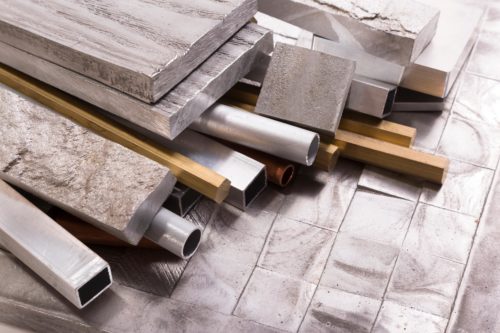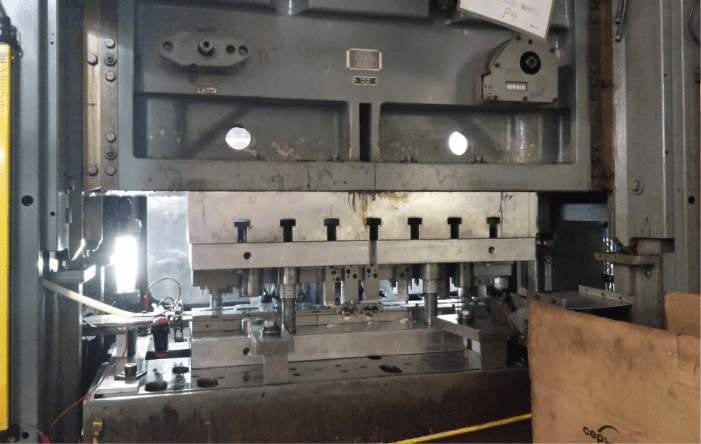By using prototyping tooling to make proof-of-concept and “functionally representative” units, CEP Technologies Corporation can shorten the time-to-market for our customers’ parts and products.
Below, our team has put together a guide to rapid prototyping to help existing and potential customers understand the process, especially as it relates to metal stamping. It highlights what it is, how it works, what benefits it offers, and what materials are used.
What Is Rapid Prototyping?
Prototyping is a key step in the development process of any new part or product. However, conventionally, it serves as a bottleneck in the process since it uses basic tools to make proof-of-concept models and requires production-quality tooling to make functional and realistic models. As a result, depending on the part and production method, the cost of prototyping operations may be prohibitively expensive for the customer. That’s why rapid prototyping techniques and technologies were created and adopted.
Rapid prototyping refers to fabrication techniques that allow for the quick production of scale models of a physical part or assembly using computer-aided design (CAD) tools. There are several different methods to produce prototypes although many models are produced using additive manufacturing processes (e.g., 3D printing). This is because the technology allows for nearly unlimited design freedom, requires no specialized tooling, and creates prototype units with similar properties to the end product. While additive manufacturing has been around for decades, it initially found limited use due to its high cost and complexity. However, recent advancements in the technology have made it possible for small and large companies to quickly and affordably make prototypes.
How Does Rapid Prototyping Work?
While additive manufacturing processes are the most commonly used in rapid prototyping projects, more conventional processes can also be utilized (e.g., subtractive manufacturing and compressive manufacturing). In any case, the production of prototype units necessitates the creation of a digital design, which can be made using computer-aided design (CAD) or another modeling software. Once the design is ready, it can be sent to the designated manufacturing unit (e.g., 3D printer, CNC machining center, molding system, etc.) to start production.
- Making rapid prototypes using additive manufacturing. Rapid prototyping projects generally leverage additive manufacturing technology, which forms the desired components by reading the information indicated in the design and adding successive layers of powder, liquid, or sheet material to build the model from the bottom up. Each layer corresponds to a cross-section of the virtual design; joined together, they create the complete component.
- Making rapid prototypes using subtractive manufacturing. Subtractive manufacturing refers to processes that remove material from the workpiece to shape it into the desired part or product. Examples include milling, turning, and grinding. The removal of material corresponds to the specs indicated in the digital design.
- Making rapid prototypes using compressive manufacturing. Compressive manufacturing refers to processes in which liquid or semi-solid material is first forced into the desired shape and then solidified. Examples include casting, molding, and compressive sintering. The shape in which the material is formed corresponds to the digital design.
Benefits of Rapid Prototyping
There are many benefits to using rapid prototyping over traditional prototyping methods. For example:
- It allows for faster exploration and realization of concepts. Rapid prototyping enables product designers and engineers to produce realistic physical models of a digital design, so they can better understand how it will look/feel and compare to other concepts.
- It enables for better communication of ideas. Designers and engineers can also use the physical models produced to communicate the product concept to colleagues, collaborators, and customers, so they are not limited to visualizing it based on the digital design. Any feedback given about the models can then be used to refine the design.
- It accommodates quicker testing of products and incorporation of changes. Since the models produced by rapid prototyping have the form, fit, and function of the final product, engineers can use them to test for manufacturability and usability and make any changes as needed. These tests ensure any issues are identified and resolved before the project moves into full production.
- It reduces costs and lead time. The high costs and lengthy lead times associated with outsourcing prototyping operations are eliminated by investing in in-house rapid prototyping.
Materials Used for Rapid Prototyping

- Nylon 12. This plastic is versatile and affordable. It can also be bonded to other substrates, electroplated, and otherwise altered to suit the specific needs of the intended application.
- Aluminum. This metal offers excellent corrosion resistance, high strength-to-weight ratio, and good temperature resistance.
- Brass. This material is strong, ductile, and chemical resistant.
- ABS. This plastic exhibits good dimensional stability, impact resistance, and aesthetic qualities.
- PTFE. This plastic is widely known by the trademarked name Teflon. It is resistant to chemicals, flames, and high temperatures.
Rapid Prototyping Services From CEP Technologies
Rapid prototyping can shorten the time-to-market for your parts and products. If you’re looking for a metal stamping partner offering rapid prototyping services, CEP Technologies has you covered. We offer a range of rapid prototyping services designed to ensure quick delivery of production-quality parts, so you have them when you need them. Our service offerings include:
- Progressive die stamping
- Laser cutting
- Photo-chemical etching
- Plating
To learn more about our rapid prototyping capabilities, check out our rapid prototyping page or contact us today. To get started on a solution, request a quote.
